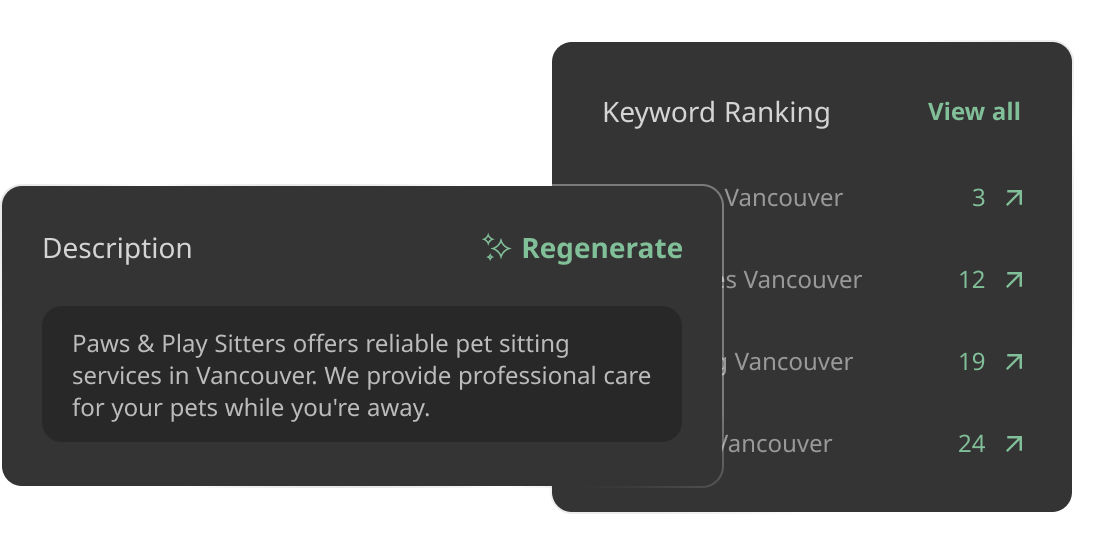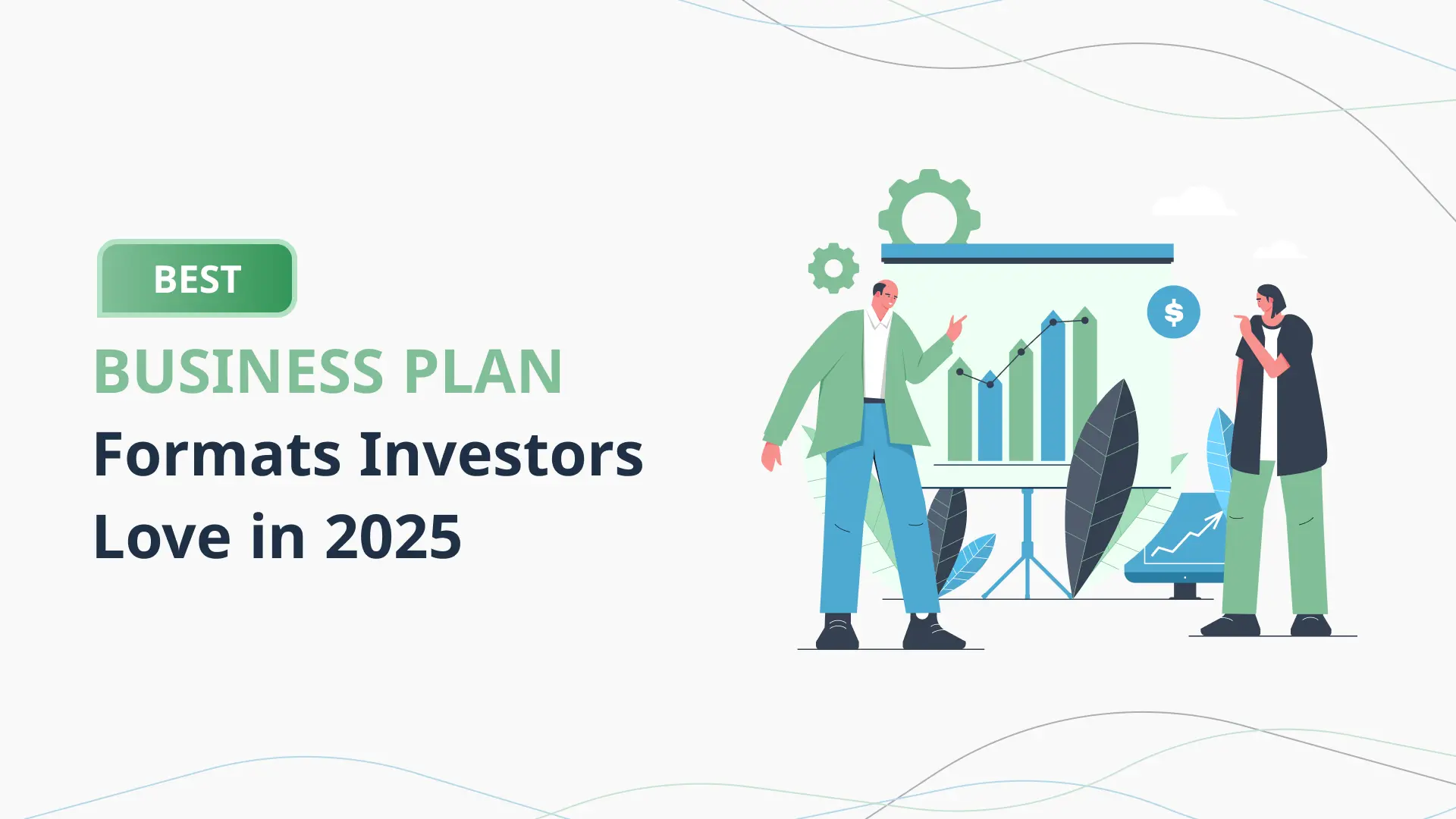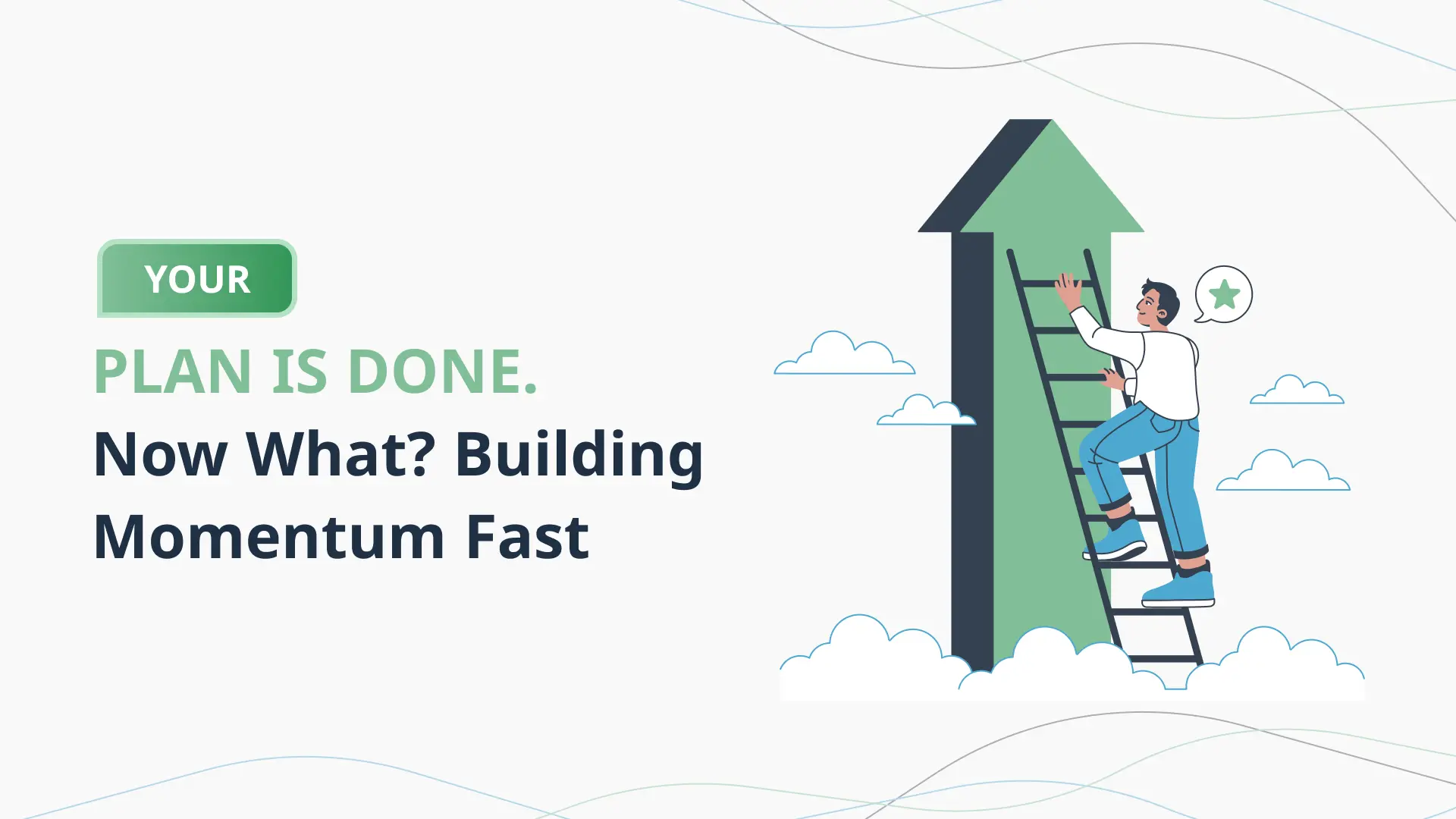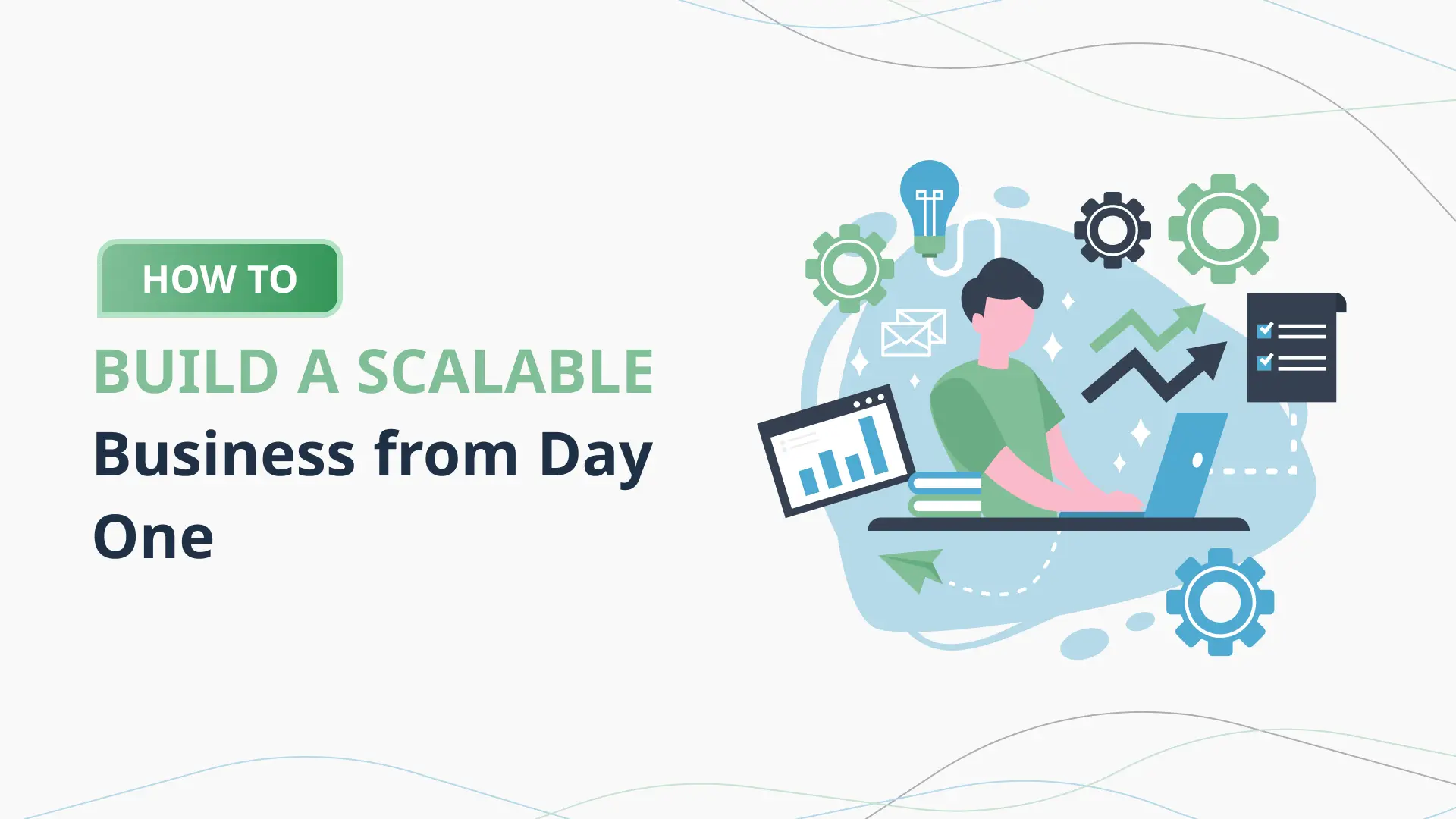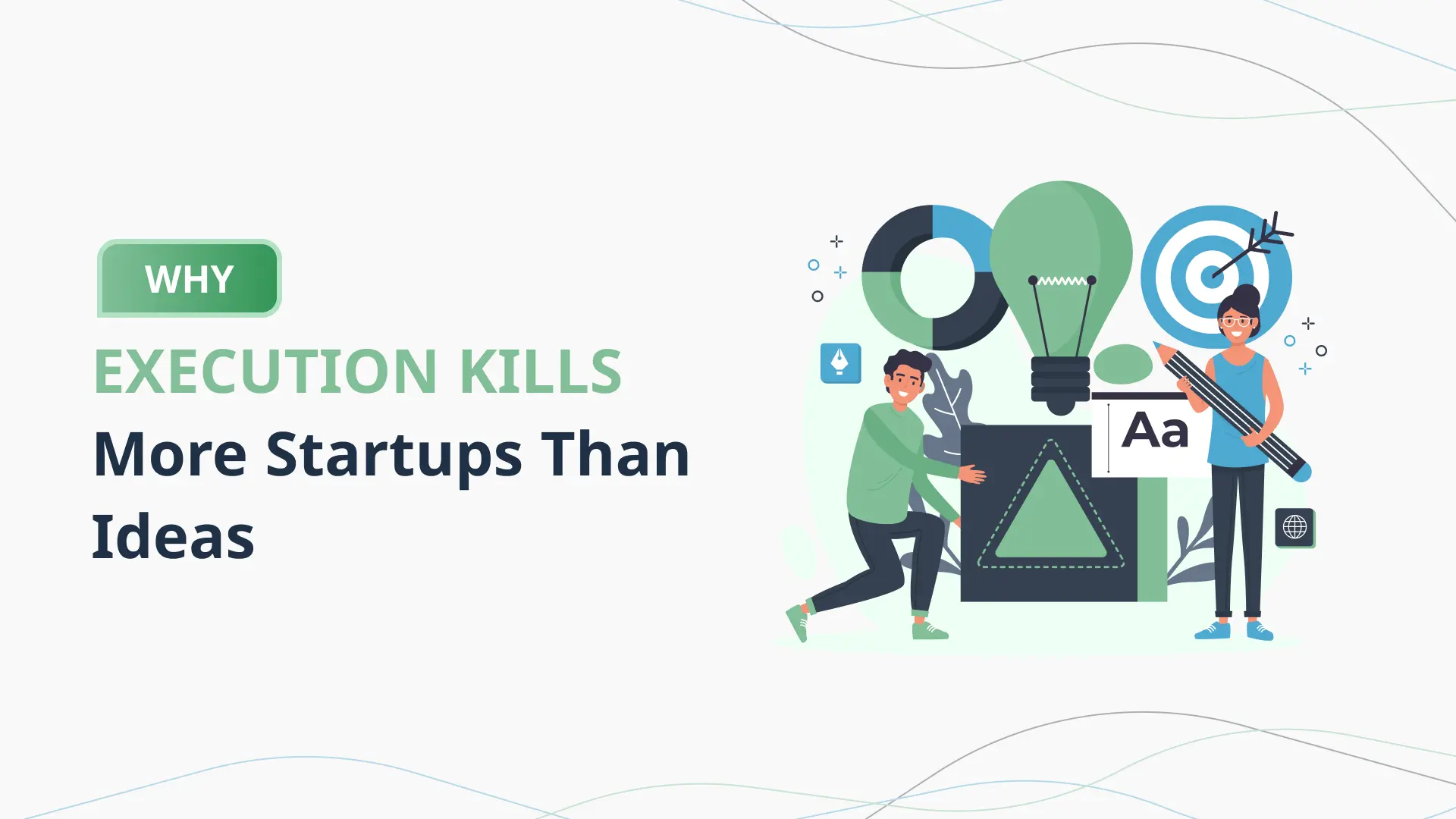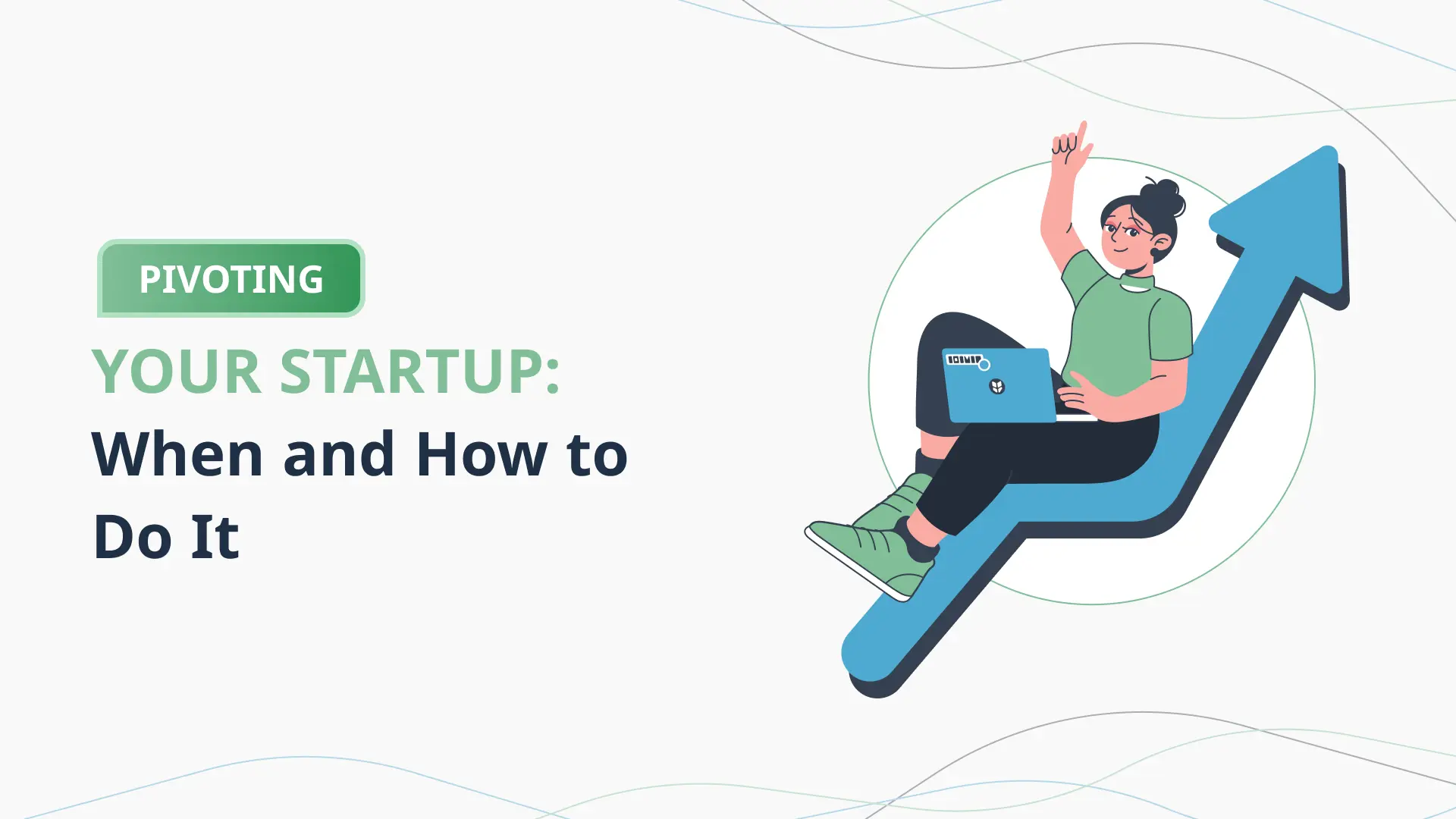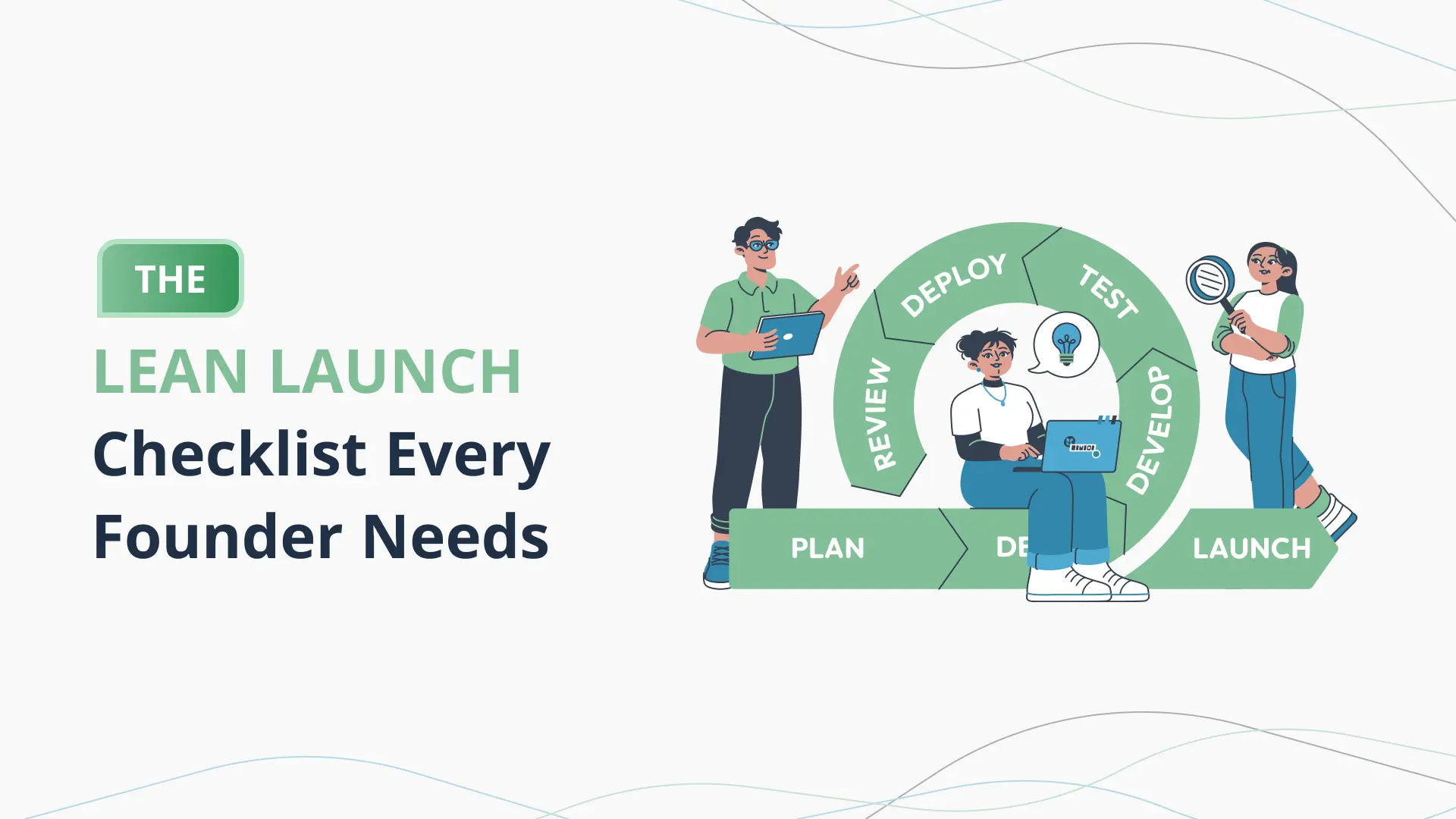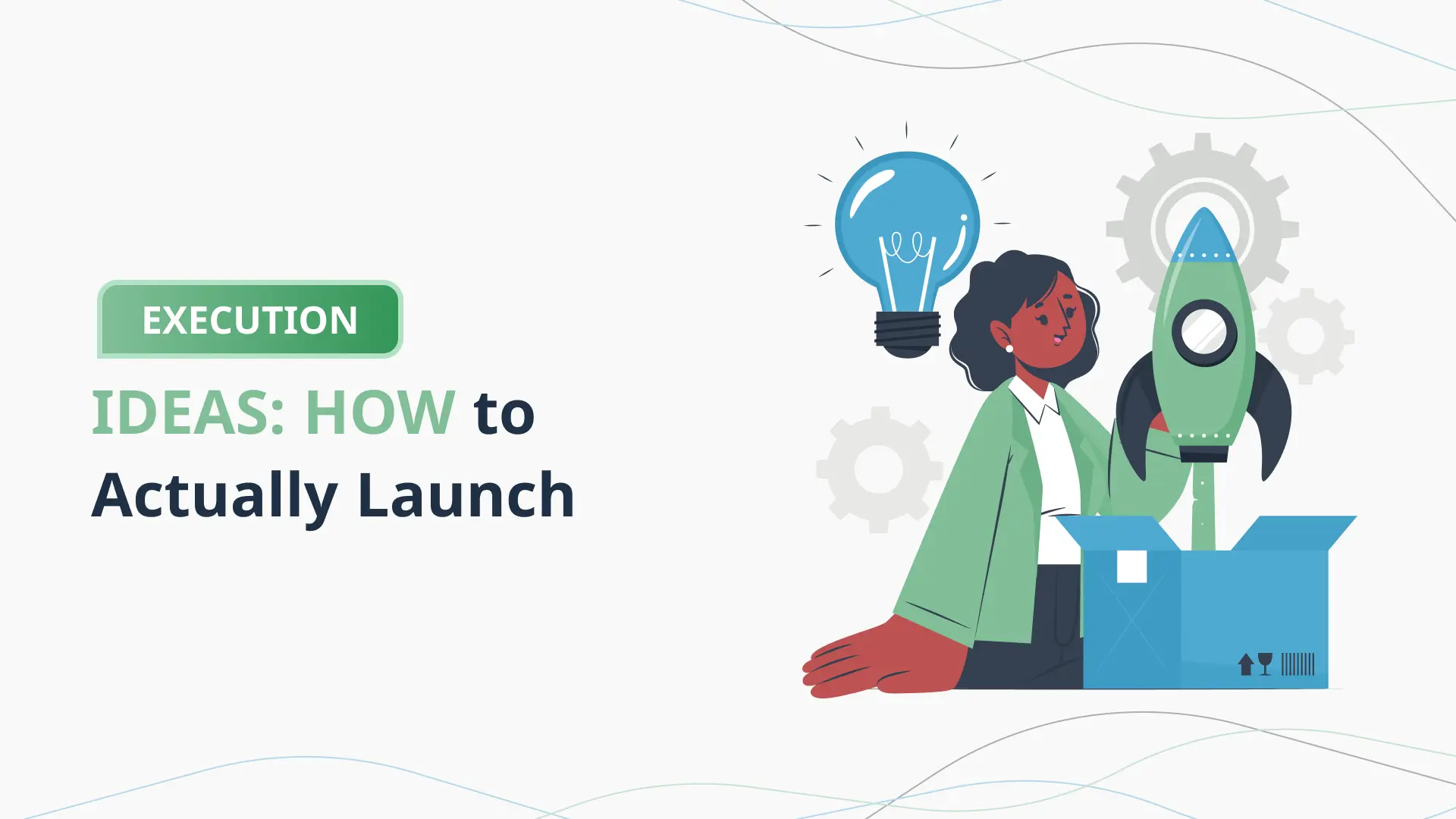Real Examples of Pitch Decks That Closed Millions

Introduction: What Separates Million-Dollar Pitch Decks from the Rest?
Picture this—you’ve spent months building a product, validating your idea, maybe even landing your first customers. Now it’s time to raise funds. You sit down to build your pitch deck and suddenly realize: this one document could make or break your next big move. No pressure, right?
For most founders, the pitch deck is the bridge between a great idea and serious capital. But here’s the catch—investors don’t give you hours to explain your vision. They give you minutes. Sometimes, not even that. What separates the pitch decks that close millions from the ones that get ignored isn’t just a flashy design or buzzwords—it’s clarity, storytelling, and proof.
The good news? You don’t need to be a designer or a finance wizard to build a winning deck. You just need the right strategy—and the right tools.
This blog is your behind-the-scenes look at what actually works. We’ll walk through real examples of pitch decks that successfully raised millions, break down the structure, and highlight common mistakes to avoid. Along the way, we’ll show you how smart founders are using AI business plan tools and financial projections software to build investor-ready decks faster.
Tools like the PlanVista app are changing the game by offering a business plan generator, pitch deck creator online, and startup planning tool all in one place. If you want to go from idea to investor-ready without the stress, this is your shortcut.
What Makes a Pitch Deck Work: The Core Concept
At its heart, a pitch deck is your startup’s story. But it’s not just your story—it’s your story told in a way that gets investors to believe in your vision, your numbers, and most importantly, in you. A strong pitch deck answers the core questions that any investor wants to know before they decide to jump in: What problem are you solving? Who’s your customer? How big is this opportunity? And how do you turn it into a business that scales?
The reality is, investors see hundreds—sometimes thousands—of decks every year. If yours doesn’t grab their attention fast and guide them through a logical, compelling narrative, it gets skipped. And we’re not talking about dramatic flair or animation-heavy slides. We’re talking about clarity, structure, and evidence.
Take Airbnb’s original pitch deck, for example. It didn’t rely on flashy visuals. Instead, it used simple slides that tackled each piece of the puzzle in order: problem, solution, market size, product, business model, traction, and team. Nothing fancy—but incredibly effective. That’s the blueprint.
The best decks follow a structure that balances storytelling with substance. They include:
- A strong opening slide that clearly communicates what the company does
- A relatable problem that’s backed by data
- A unique solution that’s easy to understand
- Market sizing that shows huge potential
- A business model that makes money (and explains how)
- Some form of traction—even if it’s early
- A capable team that’s ready to build
- The actual ask, with specifics about how the funds will be used
Founders who nail these pieces don’t just look good—they look fundable.
Still, most early-stage entrepreneurs struggle with where to start. And that’s where tools like the PlanVista app come in. With its AI-powered business plan generator and pitch deck creator online, it helps you focus on the content that matters, not just the design. You plug in your vision, your market insight, and your data, and it guides you through the rest—creating a structured, investor-ready deck in less time.
It’s not about cutting corners. It’s about cutting confusion. The PlanVista app gives you templates based on real decks that worked and builds financial projections with the kind of realism that impresses VCs and angels alike. It’s the kind of startup planning tool that feels less like a tool and more like a co-founder who happens to be great with numbers and pitch decks.
If you’re serious about raising capital, clarity is everything. Investors don’t invest in complexity. They invest in well-framed opportunities. A great pitch deck makes that opportunity impossible to ignore.
Building a Million-Dollar Deck: Step-by-Step Strategy
Creating a pitch deck that closes millions doesn’t happen by chance. There’s a strategy to it—and it starts with understanding what investors actually care about. They’re not just looking at your idea; they’re evaluating your thinking, your execution, and your potential to build something that lasts. That’s why each slide in your deck has a job to do. It’s not just about making it pretty—it’s about making it make sense.
Here’s how you do it, step by step:
- Start with a powerful hook.
Your first slide should do one thing: make investors want to keep reading. This usually includes your company name, a sharp tagline, and a one-liner that captures your big vision. Think of it like a movie trailer—it doesn’t give away everything, but it sets the tone. - Clearly define the problem.
Use relatable language. If you can back it with a striking stat, even better. For example: “80% of freelancers struggle with managing taxes—costing them thousands annually.” This makes it tangible. - Show your solution.
This is where you introduce your product or service. A simple graphic, short demo, or quick explanation is key. Keep it digestible—investors aren’t looking for a full product tour here. - Present the market opportunity.
Break down your TAM, SAM, and SOM if you can. Even better, frame the market in a way that shows urgency or momentum. Growing trends, underserved niches, and evolving consumer behavior are all worth highlighting. - Explain your business model.
Subscriptions? Freemium? Licensing? Lay it out in plain terms. Investors want to know exactly how you plan to make money. - Share your traction.
This doesn’t have to be revenue. It could be user growth, partnerships, pre-orders, or even a strong waitlist. Numbers matter here. - Map your go-to-market strategy.
How are you planning to acquire users or customers? Will you use paid channels, partnerships, virality? Show that you’ve thought this through. - Address the competition.
You do have competitors—everyone does. Instead of ignoring them, show how you stand out. Use a comparison chart or positioning map. - Highlight your team.
Investors back people, not just ideas. Even if you’re early-stage, show what makes your team credible. Backgrounds, previous wins, domain expertise—all of it matters. - Finish with financials and your ask.
Be clear about how much you’re raising and what it’ll be used for. Include high-level projections and key metrics like runway and CAC/LTV if relevant.
Of course, putting all this together isn’t easy—especially when you’re juggling product development, user feedback, and growth. That’s where the PlanVista app becomes a real advantage. As an AI business plan tool and startup planning software, it gives founders a roadmap for building a pitch deck that hits all the right notes. It helps with everything from structuring your slides to generating automated business plans and realistic financial projections.
With tools like this, you’re not just saving time—you’re increasing your chances of building a deck that gets serious investor interest.
Common Pitfalls That Kill Investor Interest
Let’s say you’ve got a great idea. Maybe even early traction. You’ve put together a pitch deck and started sending it out. But the silence is deafening. No meetings. No feedback. Just… nothing.
The reality? It’s not always the idea that turns investors off—it’s how you’re pitching it. Even promising startups fall into the same traps when it comes to pitch decks. If you’re not careful, these missteps can quietly sabotage your chances of raising capital, no matter how strong your business potential is.
Here are some of the most common mistakes that founders make—and how to avoid them.
- Trying to cram everything in.
Founders often over-explain, thinking more detail equals more credibility. But investors don’t want a data dump. They want clarity. Keep it tight. Each slide should make one point and support it visually or with one or two data points. Use your investor meeting to elaborate—not the deck itself. - Fluff over facts.
Phrases like “revolutionizing the industry” or “world-changing innovation” without backing data tend to fall flat. Replace buzzwords with evidence. Investors don’t buy hype—they buy traction, validation, and well-thought-out strategy. - Weak market sizing.
Claiming a $1 trillion market is meaningless unless you explain your specific opportunity within it. Break it down. Show you understand the niche you’re entering and why it’s ripe for disruption. - No clear business model.
It sounds obvious, but many decks skip the “how we make money” slide—or explain it in vague terms. Don’t assume your model is obvious. Spell it out with simple pricing, customer flow, or revenue channels. - Ignoring the competition.
Saying “we have no competitors” is a red flag. Every market has alternatives. Smart founders show who the players are and how they’re different—whether that’s by product, pricing, or go-to-market strategy. - Missing or weak traction.
Even if you’re early-stage, some traction is better than none. Pre-signups, pilot customers, or engagement metrics can help prove interest. If your deck doesn’t show any movement, investors may assume there isn’t any. - No clear ask.
It’s shocking how many decks leave out the raise amount, what the funds will be used for, or what milestones they’ll support. Always include a clear ask slide. “We’re raising $500K to expand our team, launch v2, and reach 10K MAUs in 12 months.” Specifics build confidence.
Most of these issues boil down to one thing: structure. When you’re deep in the weeds of your startup, it’s hard to step back and think like an investor. That’s where tools like the PlanVista app really shine. As a pitch deck creator online and business planning software, it helps founders organize their thoughts, clarify their numbers, and avoid the mistakes that trip up so many others. With templates based on what actually works, plus automated business plan tools, you get a cleaner, more compelling pitch deck—faster.
Fix these mistakes, and your odds of getting that investor meeting go way up.
A Startup Scenario: How “NomadLink” Nailed It
Sometimes, the best way to understand what works is to walk through a real scenario. So let’s look at a fictional startup, NomadLink. It’s not a unicorn—not yet. But it’s a story a lot of early-stage founders can relate to.
NomadLink was founded by Jenna, a digital nomad herself. After spending years bouncing between Airbnbs and co-working spaces, she realized there was no simple platform that bundled reliable short-term housing with quality workspaces in major cities. Her idea? A curated marketplace for digital nomads: vetted apartments with built-in co-working partnerships and local services, all accessible through one app.
She built a prototype. She even ran a pilot in Lisbon and Mexico City and onboarded 500 users in the first three months. Not bad. But when she decided to raise her first round, she hit a wall. Her pitch deck was too long, too messy, and buried her key achievements deep inside. She got polite rejections—when she got responses at all.
That’s when Jenna turned to a startup planning tool that helped her get strategic. She used a business plan generator to tighten up her market analysis and refine her core value proposition. Then, using a pitch deck creator online—the kind offered in tools like the PlanVista app—she rebuilt her entire deck from scratch.
The new version told a focused story. It opened with a sharp one-liner: “Helping 35 million remote workers live and work anywhere—without the housing headaches.” The traction slide came early and showed real numbers: pilot cities, user retention, revenue from bookings. Her business model was simple: 15% commission on stays, 10% from workspace partners. She outlined a clear go-to-market strategy: partnerships with nomad influencers and remote work communities.
She also included realistic financial projections with help from financial projections software. The projections weren’t inflated—they were grounded in early user data and expansion costs. That made her ask feel calculated, not wishful. She was raising $750K to scale to five more cities, expand her vendor network, and hit 10K users by year-end.
The result? She closed the round in just over a month.
What worked wasn’t magic—it was clarity. Her deck had a clean narrative, real traction, and a plan that made sense to investors. Tools like PlanVista didn’t write the story for her—they helped her shape it, back it up with numbers, and present it with confidence.
This is where a startup planning tool makes a difference. It’s not about replacing your hustle—it’s about helping you package it in a way that gets attention.
How Automation and AI Supercharge Pitch Creation
Building a compelling pitch deck is tough—especially when you’re wearing every hat in your startup. You’re handling product development, user acquisition, partnerships, maybe even customer support. Finding time to write, design, and refine a pitch deck that stands out? That often falls to the bottom of the list.
But here’s the thing—your pitch deck is one of the most important assets in your startup journey. It’s your foot in the door, your elevator pitch in slide form, and the document investors use to decide if you’re worth their time. Getting it right matters.
That’s where AI and automation tools are quietly transforming how founders approach this task.
Imagine instead of staring at a blank slide or Googling “how to write a business plan,” you have a tool that walks you through it. That’s what a business plan generator powered by AI can do. It asks the right questions, helps you frame your answers, and generates a structured, professional plan in minutes. And when paired with a pitch deck creator online, you’re no longer starting from scratch—you’re starting from a proven template that’s already been optimized for what investors expect.
A platform like the PlanVista app takes this one step further. It’s not just a template tool—it’s a startup planning software suite that combines storytelling with data, visuals, and projections. Founders can go from idea to investor-ready pitch with built-in guidance every step of the way.
Here’s what this looks like in action:
- You input your business model, market, and goals.
- The AI suggests content for each slide, based on investor-backed frameworks.
- Built-in financial projections software calculates realistic revenue and burn rate forecasts.
- The pitch deck comes together with clean design and clear logic—no design skills needed.
It’s more than a shortcut—it’s a strategic advantage. When you automate the busywork and guesswork, you free up time to focus on refining your story, building relationships with investors, and running your business. And the final product? A clear, compelling, and visually polished pitch deck that earns attention.
The other big win? Consistency. Whether you’re pitching a VC, joining an accelerator, or applying for a grant, PlanVista helps you present your business with the same level of professionalism every time.
You don’t have to be a designer or a finance pro to look like one. AI business plan tools like PlanVista are helping founders of all backgrounds create investor-ready content that doesn’t just look good—but actually works.
If you’ve been stuck in pitch deck limbo, maybe it’s time to stop building alone.
Why Thousands of Founders Use PlanVista
There’s a reason so many early-stage founders are turning to smarter, automated tools when it comes to pitch decks and business planning. It’s not because they’re lazy. It’s because they’re busy—and they need to work efficiently. That’s exactly why platforms like the PlanVista app are gaining momentum across the startup ecosystem.
When you’re building a company from scratch, you don’t have time to learn how to design slide decks, write financial forecasts from scratch, or format a business plan that looks investor-ready. And frankly, you shouldn’t have to. Your time is better spent building your product, talking to users, and refining your strategy.
That’s where PlanVista becomes a game-changer.
PlanVista isn’t just another pitch deck creator online. It’s a full-suite startup planning tool that helps you go from idea to investor-ready presentation without needing a degree in finance or design. Here’s what makes it stand out:
- AI-powered automation: PlanVista walks you through the steps of crafting a business plan and pitch deck using simple prompts. It’s like having a pitch mentor on demand.
- Financial projections software: Founders can quickly model revenue, expenses, and cash flow using templates that adjust to different business models—SaaS, e-commerce, B2B, and more.
- Professional output: Every slide, chart, and page is built to be shared with investors, accelerators, and grant providers. No messy formatting. No generic slides.
- Time-saving templates: Instead of reinventing the wheel, you get templates based on decks that have raised real money. They’re designed to highlight what investors care about most.
- Support for early-stage founders: Whether it’s your first pitch or your tenth, PlanVista helps you present your business like a pro. It’s not about hand-holding—it’s about accelerating the learning curve.
And the value goes beyond just the output. By using an AI business plan tool, you’re forced to think critically about your assumptions. You’re asked to define your market, map out your costs, and articulate your vision in clear, investor-ready language. That process alone makes you a sharper founder.
PlanVista also makes collaboration easy. Founders can share their plans and decks with advisors, mentors, and teammates for quick feedback. It streamlines the entire planning process—from brainstorming your idea to sending your first investor email.
The real proof? Founders who use PlanVista report faster fundraising cycles, more investor engagement, and less time spent formatting documents and more time doing the actual work of building a company.
If you’re serious about growing your startup, it’s time to stop patching together docs and spreadsheets. Let tools like PlanVista do the heavy lifting—so you can stay focused on the vision.
Conclusion: Your Million-Dollar Pitch Starts Here
If there’s one takeaway from all of this, it’s that a great pitch deck doesn’t need to be flashy—it needs to be clear. The founders who close funding rounds aren’t always the ones with the biggest ideas. More often, they’re the ones who know how to tell their story in a way that makes sense, feels grounded, and leaves investors wanting more.
We’ve looked at what goes into a winning pitch deck, the strategy behind each slide, the common traps to avoid, and how successful founders turn raw ideas into funded startups. Whether you’re at the seed stage or prepping for Series A, this is the framework that works.
And the best part? You don’t have to do it all alone.
Building your pitch deck, business plan, and financial projections from scratch used to take weeks—sometimes longer. But now, with tools like the PlanVista app, you can get investor-ready in a fraction of the time. It’s more than just a pitch deck creator online. It’s a full-stack startup planning tool built for founders who want to move fast, plan smarter, and raise with confidence.
The AI business plan tool helps you shape your story, clarify your goals, and back your idea with real data. Its financial projections software takes the guesswork out of modeling your numbers. And the result? An automated business plan and investor pitch that actually gets responses.
Thousands of early-stage founders are already using PlanVista to build better decks, validate business ideas, and bring clarity to their startup journey. And if you’re feeling stuck, overwhelmed, or just short on time, it might be exactly what you need to break through.
So here’s your next step: don’t let your pitch deck be the reason you miss out. You’ve got the vision—now match it with execution that investors can trust.
Start planning smarter with PlanVista. Try it now—no credit card required.
FAQs
PlanVista is an AI-powered startup planning tool that helps founders create business plans, pitch decks, and financial projections.
Yes, it includes a pitch deck creator online that builds investor-ready slides automatically.
Absolutely—it’s designed to support founders from idea validation to fundraising.
Yes, it offers built-in financial projections software to model revenue, expenses, and runway.
Most users can build a full business plan and pitch deck in just a few hours.
